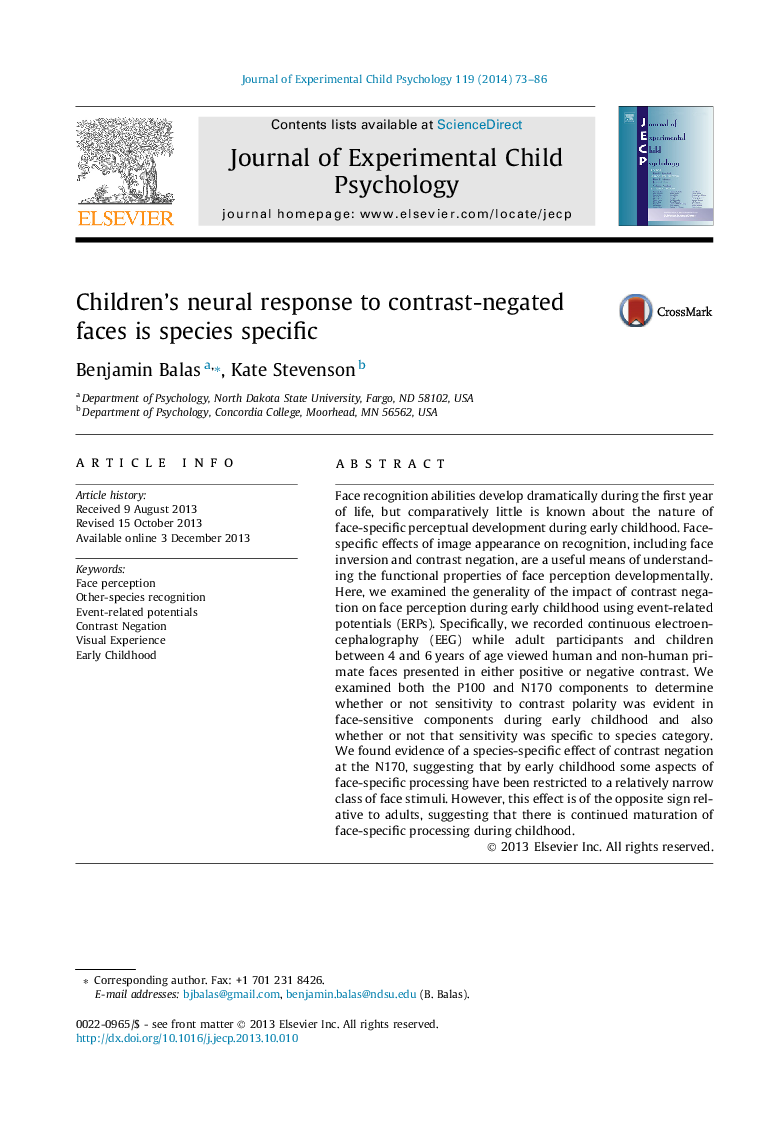| Article ID | Journal | Published Year | Pages | File Type |
|---|---|---|---|---|
| 918114 | Journal of Experimental Child Psychology | 2014 | 14 Pages |
•We measured N170 responses to own- and other-species faces in adults and 4–6 year-old children.•Human and monkey faces were presented in positive and negative contrast.•The N170 was only affected by negation in human faces.•Species-selective face processing is evident in early childhood.
Face recognition abilities develop dramatically during the first year of life, but comparatively little is known about the nature of face-specific perceptual development during early childhood. Face-specific effects of image appearance on recognition, including face inversion and contrast negation, are a useful means of understanding the functional properties of face perception developmentally. Here, we examined the generality of the impact of contrast negation on face perception during early childhood using event-related potentials (ERPs). Specifically, we recorded continuous electroencephalography (EEG) while adult participants and children between 4 and 6 years of age viewed human and non-human primate faces presented in either positive or negative contrast. We examined both the P100 and N170 components to determine whether or not sensitivity to contrast polarity was evident in face-sensitive components during early childhood and also whether or not that sensitivity was specific to species category. We found evidence of a species-specific effect of contrast negation at the N170, suggesting that by early childhood some aspects of face-specific processing have been restricted to a relatively narrow class of face stimuli. However, this effect is of the opposite sign relative to adults, suggesting that there is continued maturation of face-specific processing during childhood.
